Flower Garden Ideas Ohio: Create Your Dream Backyard Oasis
Creating a beautiful flower garden in Ohio can be a rewarding experience with the right tips and ideas. Ohio’s climate and soil provide unique opportunities to grow a variety of native and perennial flowers. Whether you’re starting from scratch or looking to revamp your garden, discovering which plants thrive in your area can make a big difference.

By choosing native plants, you can ensure a vibrant and sustainable garden that requires less maintenance and is more resistant to local pests. From colorful perennials to lush ground covers, the options are plentiful for every style and preference. This article will give you some inspiring ideas to help you design a stunning flower garden perfect for Ohio’s environment.
1) Butterfly Bush

The Butterfly Bush is a wonderful addition to your Ohio flower garden. It attracts butterflies with its bright and fragrant flowers, adding life and color.
This plant thrives in full sun and well-drained soil. There are various varieties available, from compact dwarfs to larger shrubs, each offering beautiful shades of pink, purple, blue, and white.
For Ohio, consider choosing deer-resistant types like those recommended for Ohio gardens.
With proper care, your Butterfly Bush will provide stunning blooms from June through early fall.
2) Lilac Shrub
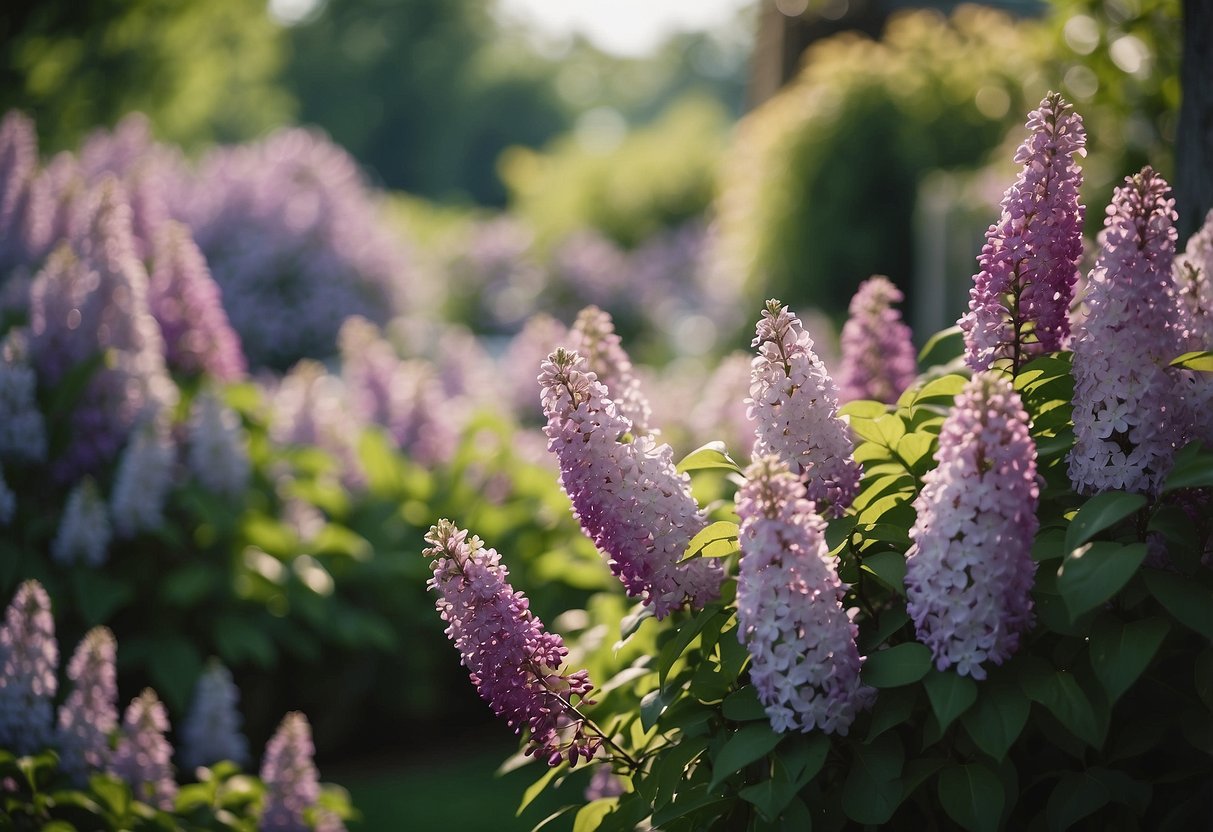
Lilac shrubs are a great addition to your Ohio garden. They offer beautiful blooms and a lovely fragrance that will enhance your outdoor space.
You can plant varieties like the dwarf Korean lilac for compact spaces. These grow to about 4-5 feet tall and wide and bloom in late spring.
Lilacs thrive in full sun. Make sure the soil is well-drained and slightly alkaline. Enjoy the burst of color and the sweet scent that lilacs bring to your garden each year.
3) Coneflower

Coneflowers are a fantastic choice for your Ohio garden. These colorful blooms, also known as Echinacea, are native to North America and thrive in Zone 6b, which includes many areas of Ohio.
You can find coneflowers in a range of colors like pink, purple, white, and yellow. They are low-maintenance and perfect for adding vibrant hues to your yard.
They are also known for attracting pollinators like bees and butterflies, which helps your garden flourish. For more details on planting coneflowers in Ohio, check out this guide.
4) Hostas
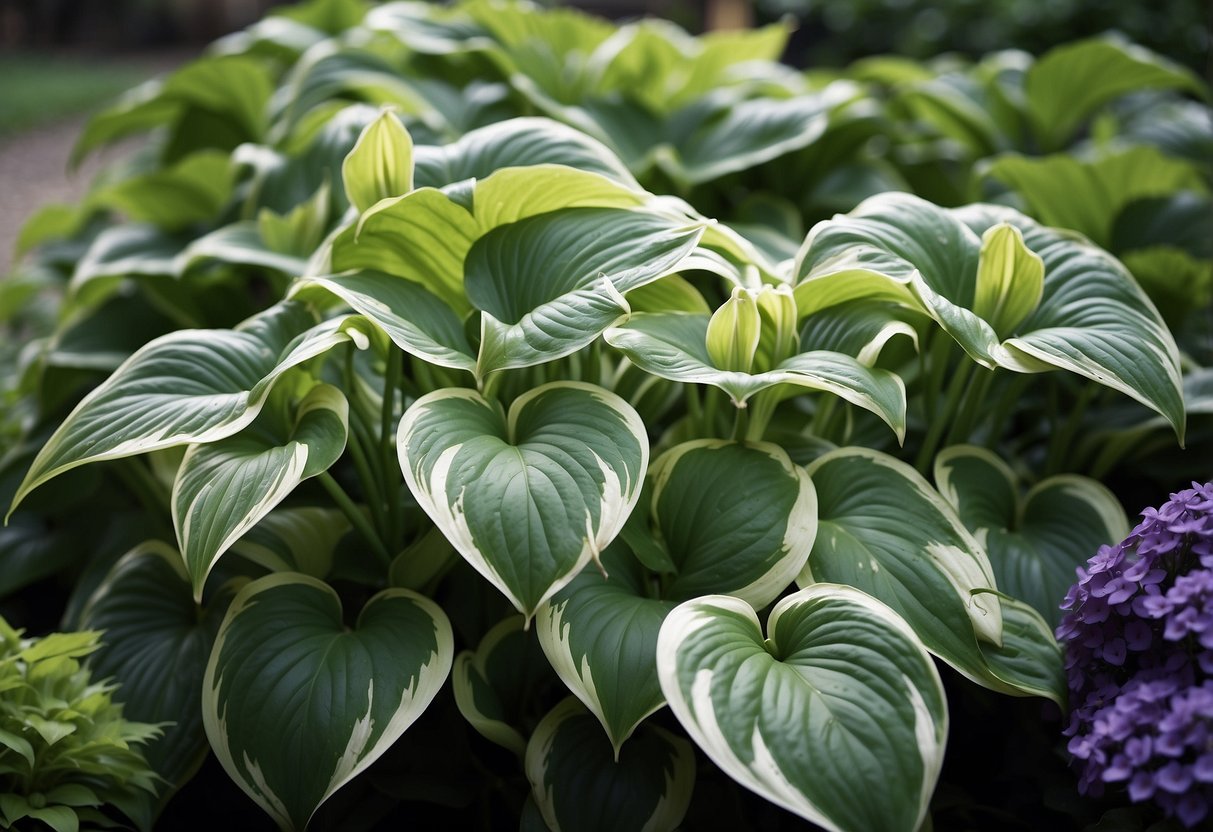
Hostas are perfect for Ohio’s shady spots. They come in many colors like blue, green, and gold.
You can plant hostas in containers to show off their beauty on patios or decks.
Mixing different shapes and textures of hostas can create a lush, green oasis in your garden.
5) Daylilies

Daylilies are perfect for your Ohio garden. These hardy perennials bloom from early summer to fall. You can enjoy their flowers for months.
Daylilies thrive in well-draining soil with a pH level between 6.0-6.5. They need at least six hours of sunlight each day.
For more tips, check out this daylily care guide. Explore different varieties like the reblooming ‘Going Bananas’ and vibrant ‘Primal Scream’.
6) Bee Balm

Bee Balm is a great flower for Ohio gardens. It attracts bees, butterflies, and hummingbirds, making it perfect for pollinator gardens.
This flower blooms from early to late summer. It has pink, red, or white tubular flowers on rounded heads. Bee Balm can grow between 2 and 4 feet high, and some types can handle wet soil, which is useful for Ohio’s changing weather.
7) Clematis Trellis
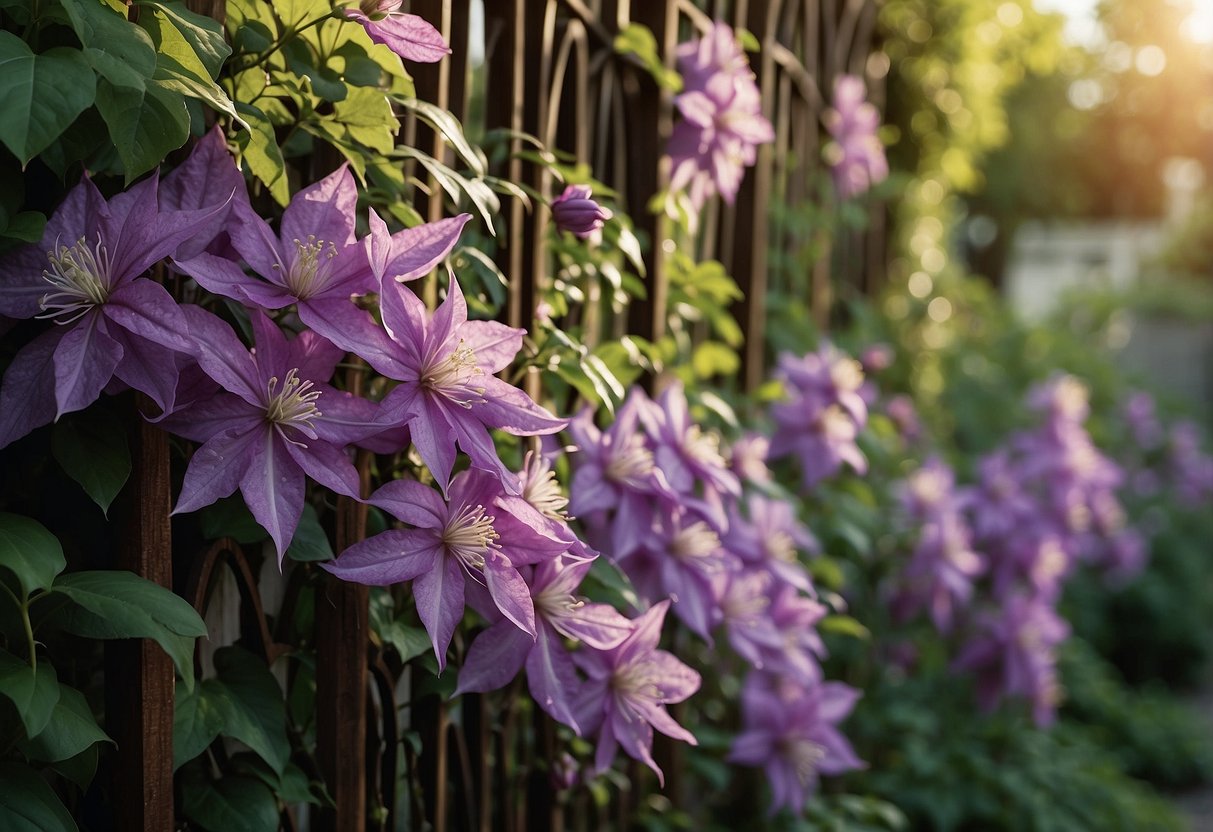
Adding a clematis trellis to your garden can really make it stand out. Clematis vines love to climb and need good support to grow well.
You can use a wooden trellis or lattice to keep your clematis looking neat and beautiful. For a more durable option, think about using a wrought iron trellis.
Try placing your trellis against a brick wall or as a freestanding piece. This will help your clematis get the sun it needs while adding charm to your garden.
8) Shasta Daisies

Shasta daisies are perfect for your Ohio flower garden. They feature bright white petals and a sunny yellow center. These cheerful flowers add a touch of brightness to any garden bed.
These plants are hybrids, created by crossing several types of daisies. They are hardy to USDA zones 5-9, which makes them a great fit for Ohio’s climate.
To grow Shasta daisies, plant them in rich, well-drained soil. Make sure they get plenty of sunlight. You can start them from seeds or buy plants online to add immediate charm to your garden.
9) Columbine

Columbines are a perfect addition to your Ohio flower garden. They thrive in well-draining soil and can adapt to various types like clay, loam, and sandy soils.
These flowers need moderate soil moisture and do well in slightly acidic to neutral soil, with a pH of 6.0 to 7.0.
For best results, plant columbine seeds after gathering them from existing plants. This way, you can enjoy their colorful blooms each spring.
Consider varieties like Winky Double Rose White for a charming touch.
10) Lungwort

Lungwort is a fantastic choice for shaded gardens in Ohio. Its dappled leaves bring a unique texture to your garden, making it a standout plant.
The flowers bloom in early spring, offering pink and blue shades. As the season progresses, the foliage becomes more pronounced and attractive.
Lungwort attracts hummingbirds and bees with its nectar, adding life and color to your garden. Learn more about this plant at Lungwort: Beautiful Foliage for the Shade Garden.
Choosing the Right Flowers
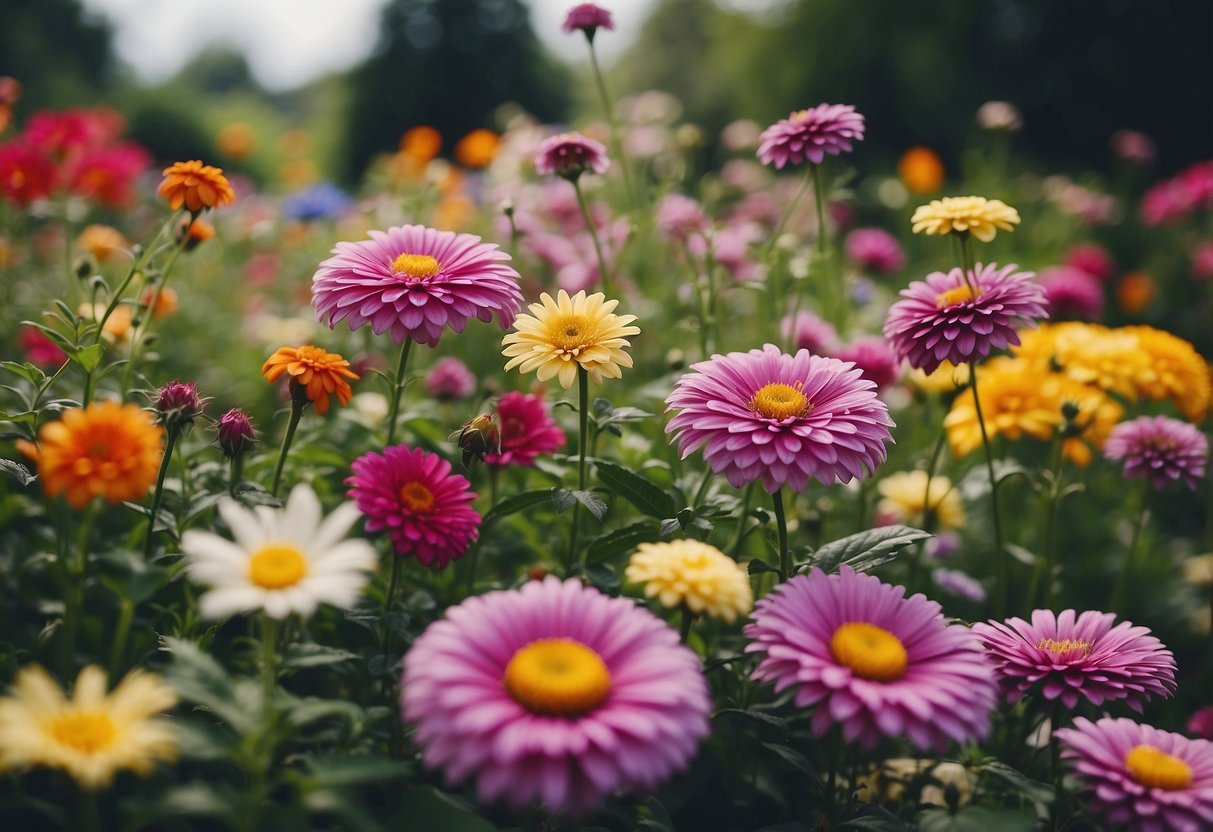
Choosing the right flowers for your Ohio garden can be fun and rewarding. Focus on selecting native plants that thrive in the region and seasonal selections to keep your garden colorful year-round.
Native Ohio Flowers
Native flowers are a great choice because they are adapted to local soil and climate conditions. One excellent native option is the Wild Bergamot. This plant features lovely lavender blooms and attracts hummingbirds. It grows best in full sun and average-to-dry soil conditions.
Another native flower to consider is the Blue Flag (Iris Versicolor). This plant loves partial shade and thrives in wet conditions. Its vibrant blue-purple blooms add a striking splash of color.
You can also think about planting Black-eyed Susans. These bright yellow flowers are hardy and can handle Ohio’s varying weather. They also attract butterflies, adding life and movement to your garden.
Seasonal Selections
Selecting flowers that bloom at different times ensures your garden is always vibrant. In the spring, you can plant Tulips which come in many colors like red, pink, and yellow. They are one of the most beautiful spring-blooming flowers and require only full sun and well-drained soil.
For summer, consider Zinnias. These flowers grow quickly and come in several colors such as pink, orange, and white. They are low-maintenance and can grow anywhere from 1 to 8 feet tall, depending on the variety.
In the fall, Chrysanthemums are perfect for adding color as the temperatures drop. Chrysanthemums are hardy and versatile, thriving well in Ohio’s autumn climate. Plant them in full sun and well-drained soil for the best results.
Designing Your Garden Layout

Creating a flower garden in Ohio requires thoughtful planning. Consider how you will organize the space and choose colors for a beautiful, cohesive look.
Space Planning
First, measure your garden area. Knowing the dimensions helps you decide what plants will fit and how to arrange them. Make sure to account for pathways so you can easily access all parts of your garden.
Next, consider the sunlight. Some plants need full sun while others thrive in partial shade. Use sun-loving plants in open, sunny spots and shade-tolerant plants in areas with less light.
Think about plant heights. Position taller plants at the back of borders or in the center of island beds to avoid blocking shorter varieties. Creating layers of different heights adds depth and interest to your garden.
Also, include some focal points, like a birdbath or a small bench. These elements provide visual breaks and make your garden a more enjoyable space.
Color Coordination
To make your garden visually pleasing, think about color schemes. You can choose contrasting colors like blue and orange to make each flower pop. Alternatively, go for a monochromatic look using different shades of one color, like purple.
Grouping plants by color can create a more harmonious look. Planting groups of three to five flowers of the same color can be especially eye-catching.
Don’t forget the seasons. Choose plants that bloom at different times to ensure color throughout the year. For example, start with spring bulbs, then add summer perennials, and finish with autumn bloomers like chrysanthemums.
Finally, consider the color of the foliage. Different shades of green, burgundy, and silver can add texture and interest, even when the plants aren’t blooming. Mix these with your flowers to create a garden that’s vibrant all year round.
Maintenance Tips for Ohio Gardens
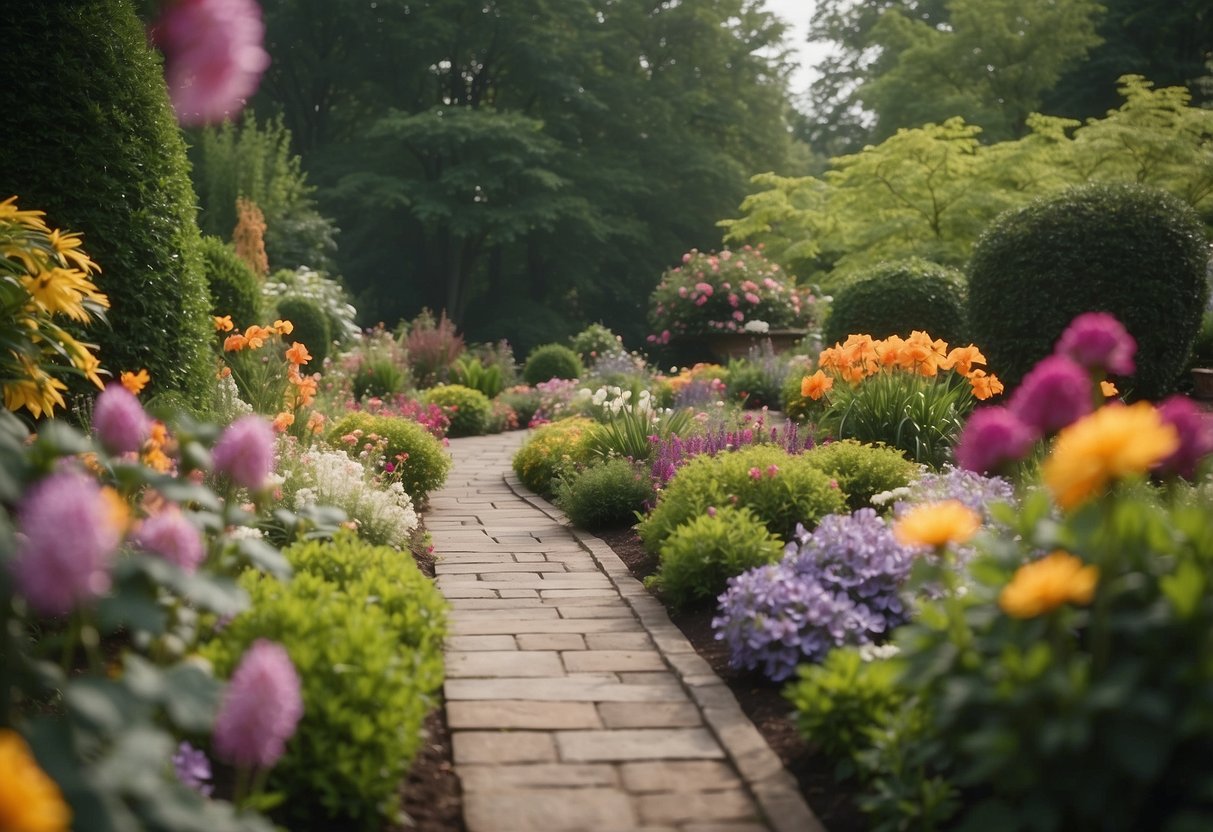
Keeping your garden in good shape involves various tasks like watering, feeding, and controlling pests. Each step helps ensure your plants stay healthy and thrive in Ohio’s climate.
Watering and Feeding
Water your garden deeply and less often to encourage roots to grow down. Early mornings are best for watering because the soil can soak up the moisture before the sun gets too strong. Use mulch to help retain soil moisture and cut down on how often you need to water.
Feed your plants with a balanced fertilizer. Look for fertilizers with equal amounts of nitrogen, phosphorus, and potassium. Fish emulsion or compost tea are good organic choices. Boost soil fertility by adding humus or compost. Regular feeding helps plants grow strong and resist diseases.
Pest and Disease Control
Inspect your garden regularly for signs of pests or diseases. Look under leaves and at the base of plants. Common pests in Ohio include aphids and caterpillars. Use insecticidal soap or neem oil to control them. Handpicking pests can also be effective.
Prevent diseases by ensuring good air circulation. Space plants properly and prune them to remove excess growth. Water at the base of plants to keep leaves dry, reducing the risk of fungal infections. Rotating crops each year can help prevent soil-borne diseases. Keeping your garden clean and free of debris reduces hiding spots for pests.







